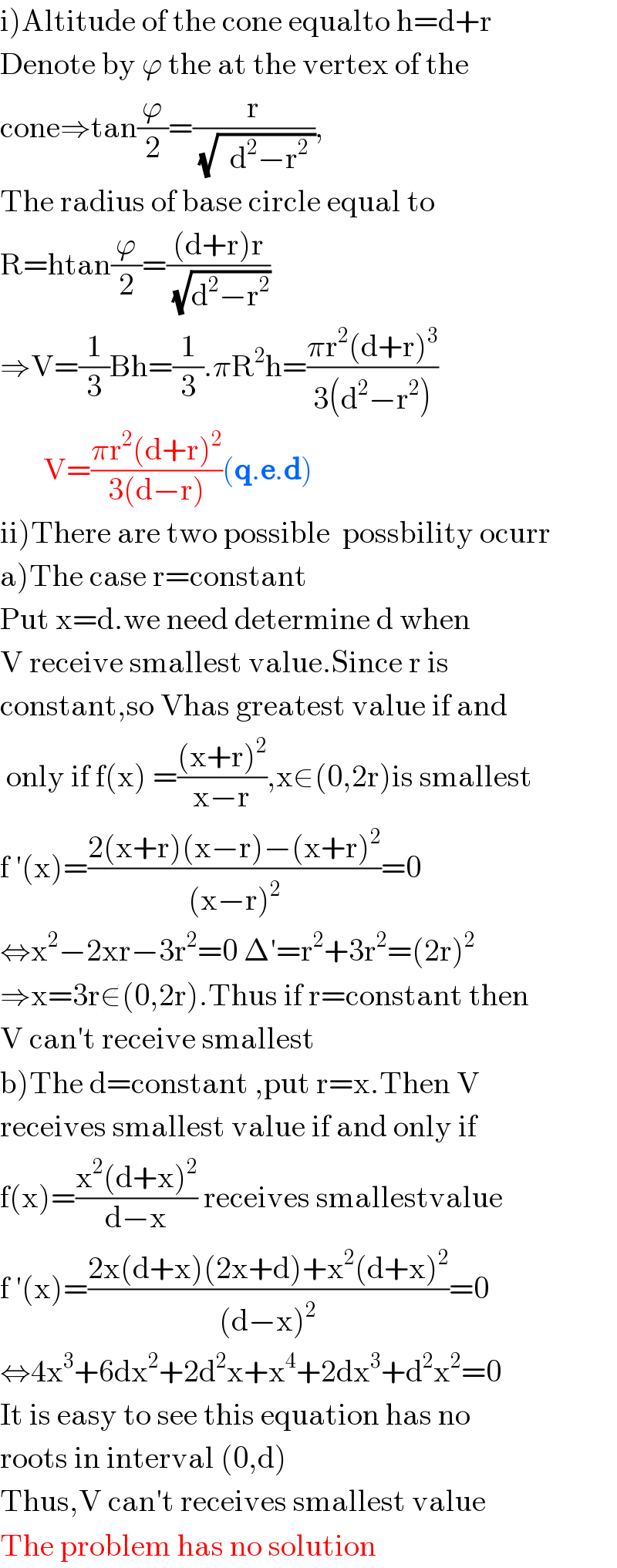1-i-A-right-circular-cone-is-circumscribed-about-a-sphere-of-radius-r-If-d-is-the-distance-from-the-center-of-the-sphere-to-the-vertex-of-the-cone-show-that-the-volume-of-the-cone-V-r-2-r-
Question Number 118069 by Lordose last updated on 15/Oct/20
Answered by 1549442205PVT last updated on 15/Oct/20



